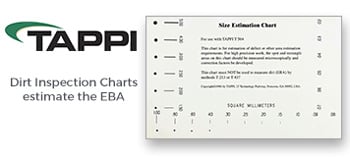 Search
Search
Use the search bar or filters below to find any TAPPI product or publication.
Filters
Content Type
Publications
Level of Knowledge
Committees
Event Type
Collections
Finish Applications on Bleached and Scoured Cotton in Improving Nonwoven Processing, 1997 Nonwovens Conference Proceedings
Finish Applications on Bleached and Scoured Cotton in Improving Nonwoven Processing, 1997 Nonwovens Conference Proceedings
Fundamentals of Ason Spunbound Technology- An Innovation to Success, 1998 Nonwovens Conference Proceedings
Fundamentals of Ason Spunbound Technology- An Innovation to Success, 1998 Nonwovens Conference Proceedings
Characterizing Fiber Orientation and Diameter Variability in Nonwovens, 1998 Nonwovens Conference Proceedings
Characterizing Fiber Orientation and Diameter Variability in Nonwovens, 1998 Nonwovens Conference Proceedings
Fiber-Liquid Interaction in Poly(propylene) Nonwovens, 1999 Nonwovens Conference Proceedings
Fiber-Liquid Interaction in Poly(propylene) Nonwovens, 1999 Nonwovens Conference Proceedings
In-Plane and Through-Plane Porosities in Nonwovens, 1999 Nonwovens Conference Proceedings
In-Plane and Through-Plane Porosities in Nonwovens, 1999 Nonwovens Conference Proceedings
Effects of Time and Temperature on Filtration Media, 1999 Nonwovens Conference Proceedings
Effects of Time and Temperature on Filtration Media, 1999 Nonwovens Conference Proceedings
Development of an Image Analysis Algorithm for Assessing Pilling, 1999 Nonwovens Conference Proceedings
Development of an Image Analysis Algorithm for Assessing Pilling, 1999 Nonwovens Conference Proceedings
Stabilization of Hydrogen Peroxide to Improve TCF Bleaching of Kraft Pulp, 1994 Pulping Conference Proceedings
Stabilization of Hydrogen Peroxide to Improve TCF Bleaching of Kraft Pulp, 1994 Pulping Conference Proceedings
Fundamentals of the Ozone/Methanol Bleaching Process, 1996 Pulping Conference Proceedings
Fundamentals of the Ozone/Methanol Bleaching Process, 1996 Pulping Conference Proceedings
Bond Strength of Oxygen Delignified Hardwood Kraft Pulps, 1996 Pulping Conference Proceedings
Bond Strength of Oxygen Delignified Hardwood Kraft Pulps, 1996 Pulping Conference Proceedings





